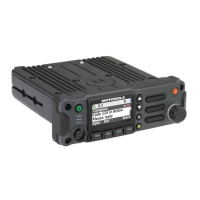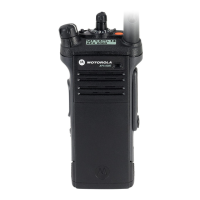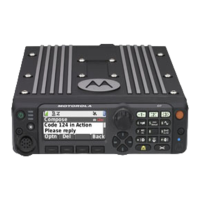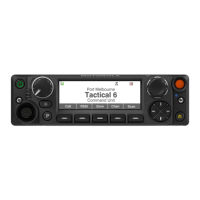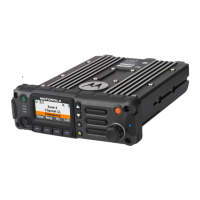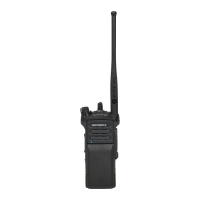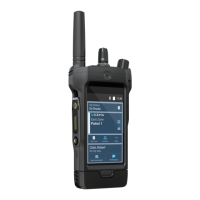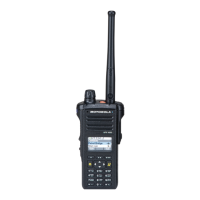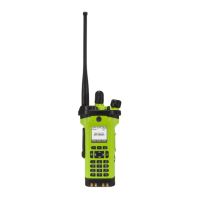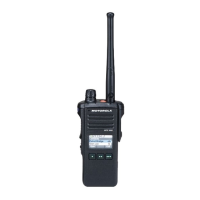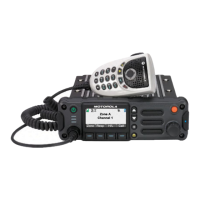
Do you have a question about the Motorola APX E5 and is the answer not in the manual?
| Brand | Motorola |
|---|---|
| Model | APX E5 |
| Category | Two-Way Radio |
| Language | English |
Explains the use of notations like Warning, Caution, and Notice for safety emphasis.
Provides suggestions for proper radio usage and troubleshooting.
Details new features designed to enhance radio security, quality, and efficiency.
Advises consulting dealer/admin for specific radio settings and optional accessories.
Step-by-step instructions on powering on the radio and initial display indicators.
Procedure for increasing or decreasing the radio's volume using the Volume Knob.
Details the physical buttons, knobs, and indicators on the E5 control head and microphone.
Explains the use of the keypad for entering alphanumeric text on the radio.
Describes how system administrators can program buttons for shortcuts and functions.
Explains the meaning of different LED indications for radio status.
Describes the various icons displayed on the radio's LCD for status information.
Lists alert tones and the conditions under which they occur to inform the user.
Instructions on how to select a zone, which is a group of channels.
Procedure for selecting a radio channel based on frequency pairs and programmed functions.
Explains how to receive and respond to various radio calls based on system indicators.
Details methods for initiating calls using zone menu, mode knob, or contacts.
Virtual assistant for radio management and information lookups using voice commands.
Explains the operations of various advanced call features available in the radio.
Provides "address-book" capabilities for initiating calls with aliases and IDs.
Monitors traffic on different channels by scanning a programmed list.
Indicates critical situations and overrides other communication with an emergency signal.
Enables sending/receiving messages and running database queries directly from radios.
Provides the highest commercially available level of voice security on trunked and conventional channels.
Requires entering a password to unlock the radio when it powers on.
Explains features to stun or kill radios remotely for unauthorized use prevention.
Discusses GPS feature for location determination and its performance.
Uses GPS to determine location and evaluate if radio is within a predefined Geofence area.
Explains the trunking system control features available in the radio.
Extends functionality by connecting to external Motorola Solutions accessories via Bluetooth.
Connects radio to Wi-Fi networks for wireless programming via SSID.
Explains the operations of various utility functions available on the radio.
Lists accessories approved for use in hazardous environments.
Outlines FCC rules for radio operation, licensing requirements, and contact information.
Details the process and requirements for obtaining a Canadian radio license.
Instructions for sending distress calls on VHF Channel 16.
Outlines FCC requirements for shipboard radio operation on VHF frequencies.
Details the duration and scope of the Motorola Solutions warranty for communication products.
Lists conditions and damages not covered under the product warranty.
Outlines Motorola's defense against patent infringement claims and software usage rights.

